15 years one-stop China custom CNC machining parts factory
 1938 |
Published by VMT at Oct 04 2024
1938 |
Published by VMT at Oct 04 2024
Metal polishing is an essential process in manufacturing, providing not only aesthetic appeal but also enhancing the durability and functionality of metal components. Whether it’s for CNC machined parts or custom metal fabrications, polishing ensures that surfaces are smooth, free of imperfections, and resistant to corrosion or wear. Polished metals are commonly used in industries such as automotive, aerospace, electronics, and household goods, where both appearance and performance matter.
This guide will walk you through the different types of metal polishing techniques, their benefits, and the steps involved in achieving a polished finish. By the end, you will have a comprehensive understanding of how polishing impacts CNC precision machining and how to choose the right technique for your application.
Polishing metal is not just about improving its appearance; it also serves functional purposes that enhance the overall quality and performance of the product. The process involves removing surface imperfections, enhancing reflectivity, and improving the metal’s resistance to environmental factors. Below are the key benefits of metal polishing.
1. Product Aesthetics
Polished metal surfaces have a high-gloss or refined matte finish, which enhances the visual appeal of the product. This is especially important for consumer goods, automotive parts, and decorative items, where appearance plays a crucial role in the product's marketability.
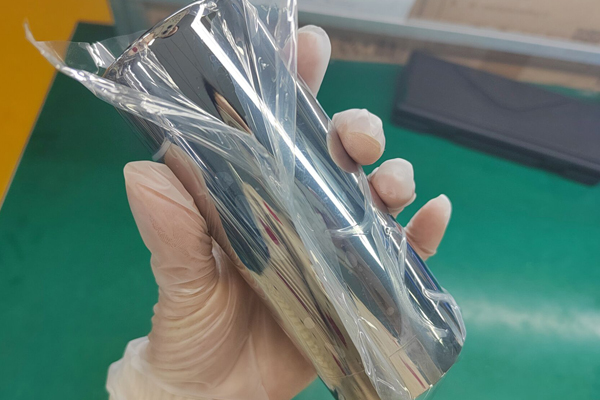
2. Provide a Protective Layer
Polishing creates a smoother surface that helps prevent corrosion and tarnishing. When metal surfaces are polished, they are less prone to oxidation, making them ideal for outdoor or high-humidity environments where unpolished metal would degrade quickly.
3. Improve Light Reflection
Polishing increases the metal’s ability to reflect light. This property is particularly valuable in industries such as lighting, mirrors, and electronic devices, where reflectivity plays a functional role. High-reflective polished finishes are often required for optical instruments and lighting fixtures.
4. Better Functionality
In applications where metal components interact with other parts, such as machinery or tools, polishing can reduce friction, wear, and tear. Polished surfaces also improve the mechanical properties of CNC machined parts, allowing for better fit and smoother operation in assemblies.
5. Improve Cleanliness
Polished metal surfaces are easier to clean and less likely to harbor dirt, bacteria, or contaminants. This makes polishing essential for medical instruments, food processing equipment, and other industries where hygiene is critical.
There are several techniques used to polish metal, each tailored to the specific type of metal and the desired surface finish. The technique you choose depends on factors such as the type of metal, the product’s intended use, and the finish you want to achieve. Before you start polishing, however, it's essential to properly prepare the surface for optimal results.
Surface Preparation Before Polishing
Before polishing begins, the metal surface must be properly prepared. This involves cleaning, removing corrosion, and eliminating surface imperfections to ensure a smooth and flawless finish. Poor preparation can lead to uneven polishing results and a less durable surface finish.
Polishing Steps
Remove Rust or Corrosion
If the metal surface has rust or corrosion, use a rust remover or abrasive tool to eliminate it. Removing these imperfections before polishing ensures that the surface is even and smooth, which is essential for achieving a high-quality finish.
Cleaning the Surface
Clean the metal thoroughly with soap and water or a specialized metal cleaner. Any dirt, grease, or debris left on the surface can interfere with the polishing process, resulting in imperfections.
Eliminating Blemishes
Minor scratches, dents, or other surface defects should be addressed using sandpaper or a grinding tool. This step ensures that the surface is as smooth as possible before you begin the polishing process.
Rinse and Dry
After cleaning and preparing the surface, rinse the metal thoroughly to remove any residues and let it dry completely before moving to the polishing step.
1. Manual Polishing Techniques
Manual polishing is a traditional approach that involves using hand tools, polishing pads, and compounds to achieve a polished finish. This method is often used for small parts, intricate designs, or when greater control is required over the polishing process.
Here are the steps involved in the manual polishing process:
Select and Apply Polishing Compound
Choose the right polishing compound based on the type of metal and the desired finish. Apply the compound to a soft cloth or polishing pad, ensuring even coverage.
Start Polishing
Rub the metal surface in circular motions with the polishing pad, applying steady pressure. Be sure to cover the entire surface evenly to avoid streaks or uneven patches. Depending on the condition of the metal, you may need to polish in multiple stages, starting with a coarse compound and finishing with a fine one.
Clean and Inspect
After polishing, wipe the surface clean with a microfiber cloth and inspect the finish. If necessary, repeat the polishing process until the desired finish is achieved.
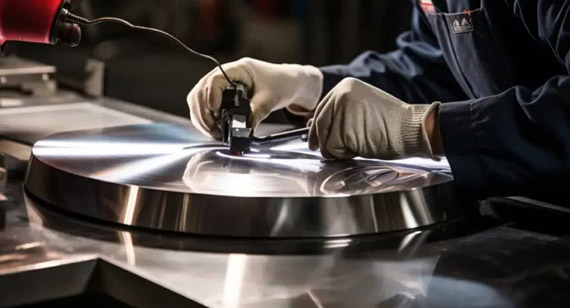
2. Machine Polishing Techniques
Machine polishing uses power tools such as rotary buffers or polishing machines to achieve a high-quality, consistent finish on metal surfaces. Machine polishing is faster and more efficient than manual polishing, making it ideal for larger CNC machining parts and production runs.
Here is a step-by-step guide to machine polishing techniques:
Select the Right Polishing Pad
Different polishing pads offer varying levels of abrasiveness. Select a pad that matches the type of metal and the finish you want to achieve. For example, soft foam pads are ideal for fine polishing, while wool pads are better suited for rough surfaces.
Apply Polishing Compound
Apply a small amount of polishing compound to the surface of the pad or directly onto the metal. Spread it evenly to avoid build-up and ensure uniform coverage.
Set Speed and Start Polishing
Set the machine to a low speed to start and gradually increase the speed as needed. Use smooth, overlapping motions to polish the entire surface. Be careful not to apply too much pressure, as this can cause heat build-up and damage the metal.
Check Progress
Periodically stop the machine to inspect the surface. Check for uniformity and shine. If the surface appears hazy or uneven, adjust your polishing technique accordingly.
Finish Polishing
Once the desired level of polish is achieved, clean the surface with a microfiber cloth to remove any remaining compound, and let the metal cool down before handling.
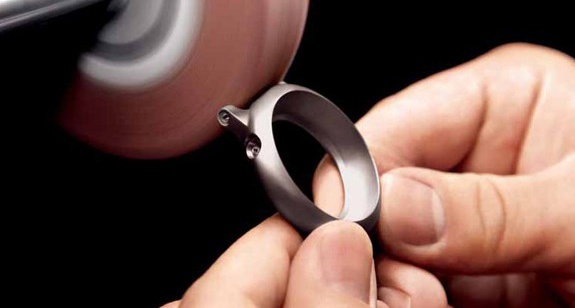
3. Chemical Polishing Techniques
Chemical polishing, or electropolishing, involves the use of chemical solutions to remove a thin layer of material from the metal surface, resulting in a smooth, polished finish. This technique is ideal for intricate or delicate parts that are difficult to polish mechanically.
Here is a breakdown of chemical polishing techniques:
Select the Right Chemical Polishing Solution
Different metals require different chemical solutions. Choose a solution specifically formulated for the metal you are polishing, whether it’s stainless steel, aluminum, or brass.
Prepare the Solution
Prepare the chemical solution according to the manufacturer's instructions. Make sure to work in a well-ventilated area and wear protective gear, as chemical polishing can release harmful fumes.
Immerse the Metal Object in Water
Submerge the metal part in the chemical solution, ensuring that it is completely covered. The solution will begin to dissolve the surface layer of the metal, removing impurities and rough spots.
Monitor the Chemical Process
Chemical polishing requires precise timing. Monitor the process closely to avoid over-polishing, which can weaken the part or alter its dimensions. Once the desired finish is achieved, remove the metal from the solution.
Rinse and Dry
Rinse the metal thoroughly with clean water to neutralize the chemical reaction. Dry the part completely before further processing or use.
Polishing can create a variety of surface finishes, depending on the technique and tools used. Here are some common types of metal polishing finishes.
1. Mirror Polishing
Mirror polishing produces a high-gloss, reflective surface that resembles a mirror. This finish is commonly used for decorative items, automotive parts, and CNC machined parts where a flawless, shiny surface is desired.
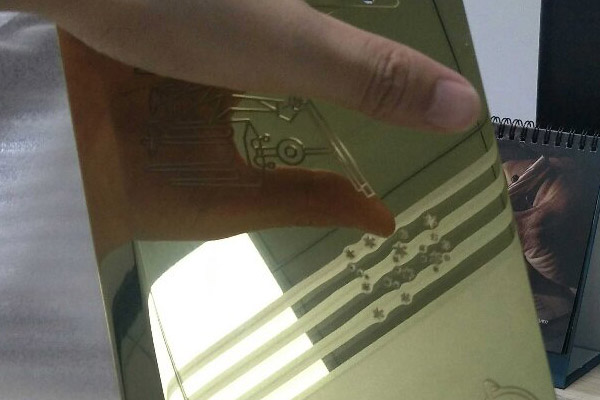
2. Brushed Finish
A brushed finish has a textured, linear pattern created by brushing the surface with abrasive materials. This finish is often used for stainless steel appliances, architectural elements, and modern furniture. The brushed finish reduces glare while maintaining a sleek, clean appearance.
3. Satin Finish
A satin finish is a smooth, low-gloss finish that provides a refined look without the high shine of mirror polishing. Satin finishes are often used for applications that require a balance of aesthetics and practicality, such as kitchen hardware and bathroom fixtures.
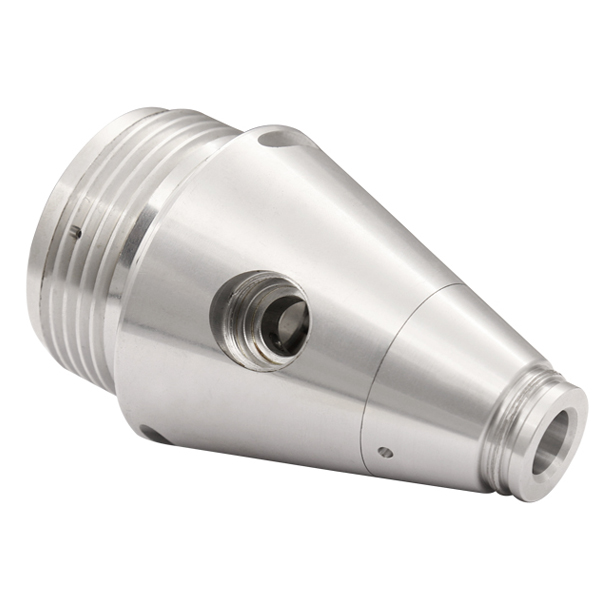
4. Antique Finish
An antique finish gives the metal a worn, aged appearance. This finish is often used for decorative items, jewelry, and furniture hardware to create a vintage or rustic look.
Achieving a high-quality polished finish requires attention to detail and the right tools and techniques. Here are some tips to ensure the best results when polishing metal.
1. Choose the Right Polishing Tools
Selecting the appropriate tools—such as polishing pads, buffing wheels, and compounds—is crucial for achieving the desired finish. Always match the tools to the type of metal and the finish you want to create.
2. Apply Polish Carefully
Use the right amount of polishing compound to avoid build-up, which can lead to uneven polishing or streaks. Be consistent with your pressure and movements to achieve an even, high-quality finish.
3. Take Necessary Safety Precautions
Polishing can create heat, dust, and fumes, especially when using chemical solutions. Always wear protective gear, such as gloves, masks, and goggles, to protect yourself during the process.
Metal polishing is a crucial finishing process that enhances both the aesthetic and functional properties of metal parts. Whether you are working on custom CNC machining components or creating decorative metal items, polishing can significantly improve the product's appearance, durability, and performance. With various techniques available—including manual, machine, and chemical polishing—there's a solution for every type of project.
At VMT, we specialize in CNC machining services and offer expert polishing for CNC prototype machining and metal polished CNC machining parts. Our comprehensive approach ensures that your parts meet the highest standards of quality, precision, and appearance.
What tools can I use to polish metal parts?
Common tools for polishing metal include buffing wheels, polishing pads, abrasive compounds, and rotary buffers. The tool selection depends on the metal type and the desired finish.
How does polishing differ from buffing?
Polishing involves removing material to create a smooth surface, while buffing is a final step that adds shine by using a soft cloth or pad to rub the surface.
What are the main reasons why metal products need to be polished?
Metal products are polished to improve their appearance, reduce corrosion, enhance cleanliness, and improve functionality by reducing friction.
What is the best way to polish metal?
The best way to polish metal depends on the metal type and desired finish. Manual polishing is ideal for small parts, while machine polishing is suited for larger surfaces.
What are the different types of metal polishing?
The main types of metal polishing include manual polishing, machine polishing, and chemical polishing, each with its own advantages and applications.
How to chemically polish steel?
Steel can be chemically polished by immersing it in a chemical solution designed to remove a thin surface layer, creating a smooth and reflective finish.
Can oil be used to polish metal?
Oils can be used as a lubricant in the polishing process to prevent heat build-up and reduce friction, but they do not replace polishing compounds for achieving a high-quality finish.
What is the difference between polishing and grinding?
Grinding removes more material than polishing and is used to correct surface imperfections or shape the metal, while polishing smooths the surface for a fine finish.
What is the difference between polishing and coating?
Polishing alters the surface of the metal to improve smoothness and appearance, whereas coating involves applying a protective layer to the surface to protect it from corrosion or wear.
